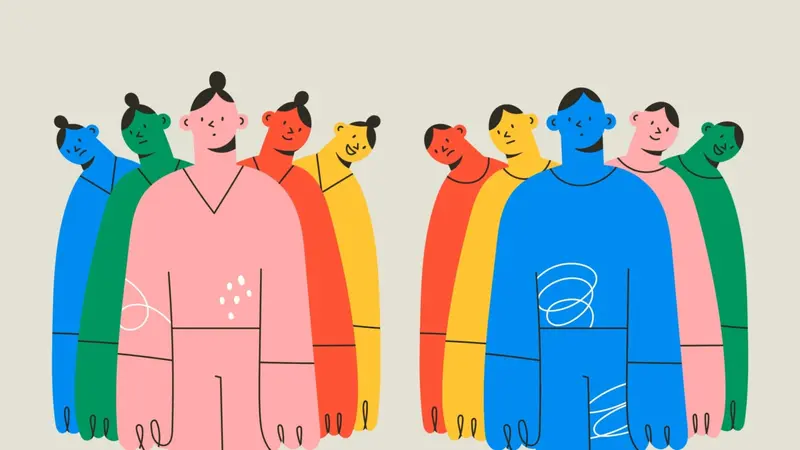

Mental and Behavioral Well-Being

Mental and Behavioral Well-Being
Culture and Genomics in Bipolar Disorder
A 2025 article, published in Biological Psychiatry, examines how biology, culture, and healthcare systems converge to shape bipolar disorder (BD) worldwide.
BD is a mood condition that is strongly influenced by both genetics and environment, with studies estimating that genetic factors account for 60% to 80% of the risk. At the same time, social and cultural factors, such as access to healthcare, community support, and attitudes toward mental illness, also shape how the disorder develops and how severe symptoms become. These influences vary across regions and populations, which helps explain differences in prevalence and outcomes around the world. Understanding BD therefore requires looking at the combined effects of biology, environment, and culture rather than any single factor.
Ancestry vs. Ethnicity
Ancestry and ethnicity are distinct concepts. Ancestry refers to a person’s genetic background, the inherited patterns of DNA passed down through populations over time. This matters because different populations carry different genetic variations, which can influence how BD appears in genetic studies. If scientists do not take these differences into account, they may mistakenly connect certain genes to the disorder. These variations also affect the usefulness of polygenic risk scores, a type of genetic tool that combines thousands of small genetic factors into a single score that estimates a person’s likelihood of developing a condition. Scores developed in one population often do not predict risk accurately in others.
Ethnicity, on the other hand, relates to cultural identity, including language, religion, and geography. Ethnicity can strongly influence environmental exposures and healthcare access but is not the same as genetic background.
Gender Differences
Although BD was once thought to affect men and women equally, newer research suggests it may be more common in women. Women with BD are more likely to experience rapid mood changes, depressive episodes, and suicide attempts. Biological events such as pregnancy and childbirth increase both the risk of developing BD and the chance of relapse. These circumstances complicate treatment decisions during pregnancy and after birth.
Geographic Patterns
Data from the Global Burden of Disease study show that BD appears least common in East and Southeast Asia, with about 180 to 200 cases per 100,000 people. Rates are far higher in Oceania, Western Europe, Latin America, and parts of the Middle East, where they exceed 1,000 cases per 100,000. These differences may reflect biological variation, but they are also shaped by cultural perceptions of mental illness, diagnostic practices, and access to care.
Healthcare Systems and Resources
Countries with more psychiatrists often identify more BD cases, yet this pattern is not universal. Estonia and Lithuania, for example, have many psychiatrists but relatively low prevalence. Argentina and Switzerland, by contrast, have both high psychiatrist availability and high prevalence. This suggests that diagnosis rates are influenced by both actual illness burden and the strength of healthcare systems, as well as cultural willingness to seek treatment.
The authors argue that a complete understanding of BD must combine genetics with cultural context and healthcare access. If a purely genetic or medical approach is taken, there is a risk of misunderstanding the disease. Only a global perspective can ensure that research and treatment approaches are accurate and equitable.
REFERENCES
Fullerton, J. M., et al. (2025). Global diversity in bipolar disorder: The role of cultural and social differences with a view to genomics. Biological Psychiatry, 98(4), 354–364. https://www.biologicalpsychiatryjournal.com/article/S0006-3223(25)00106-4/fulltext


 By
By



